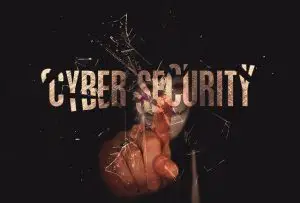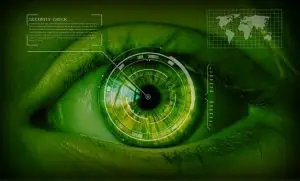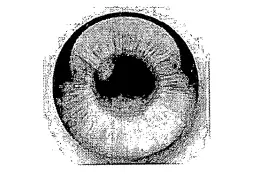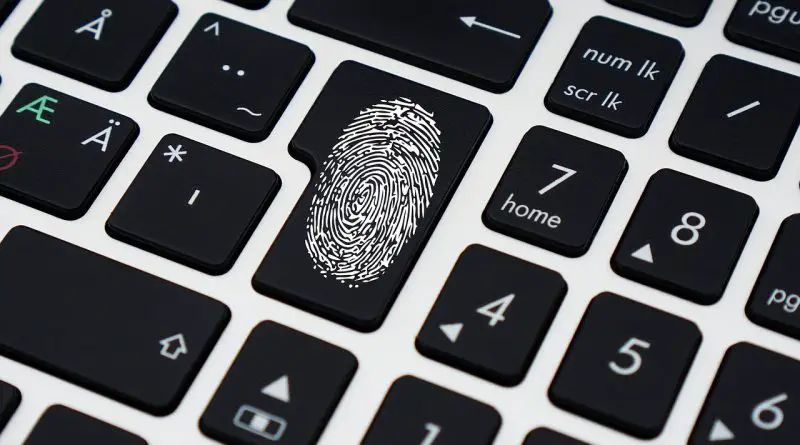Biometric Authentication (Face ,Fingerprint & Iris Recognition) And Ethical Hacking – A Comprehensive Guide !!
In this era of digitization, the security methods indeed have gone through a drastic advancement phase. Now the security techniques are very well structured to combat any hacking threat or malicious code attack promptly with more equipped detection strategies.
This gives rise to the study of the subject of ‘Ethical Hacking‘ (will be discussed later in the post) . Further, we will explore the various Biometric authentication process including the face , fingerprint, and iris recognition methods in detail .

“Biometrics” is the Greek word divided into two parts: “bio” means life and “metrics” means to measure. In computer science, Biometric is defined as the method of identity verification using person physical or behavioral characteristics.
What Is Biometric Authentication Method In Security ?
Biometric authentication provides a way of verifying the identity of the user. Biometric authentication basically is a pattern recognition system which is used to verify or identify the users, based on their unique physical characteristics.
Biometric authentication is the process of making sure that the person is the same who claims to be. Authentication can be achieved by using different ways like something that person knows (password authentication), something the person has (keys), and something the person is (fingerprints, footprint, face recognition).
The unique characteristics like fingerprints, footprint, and face recognition of person can be used to prevent unauthorized access to the system using an automated method of biometric control or by checking unique features or physical characteristic of a person for identity verification .
What Are The Biometric Authentication Techniques ?
Different biometric authentication techniques available nowadays but apart from that the most common technologies which are commercially available nowadays are: fingerprint, face recognition, finger geometry, hand geometry, palm print, iris pattern, and retina pattern .
Fingerprint Technology :
Fingerprint identification is the oldest technology of all the biometric techniques. Fingerprints were already used in many countries like India, China for correct identification of a person before entering into a system (company, organization, and even for login into computer system).

Optical fingerprint reader is the most commonly used fingerprint reader at present. It is based on reflection changes at the spots where finger papilar lines touch the reader’s surface.
All the optical fingerprint readers has the source of light, the light sensor, and a special reflection surface that changes the reflection according to the pressure. Some of the readers are fitted out with the processing and memory chips as well.
Fingerprint bitmap was obtained by an optical fingerprint reader as shown above .
Face Recognition Techniques :
Face recognition techniques in computer science are used to automatically identify or verifies the person from his digital image or by using some video frame present into the database.
One can verify this technique by taking examples of a video frame or digital image and compare it with the examples in the database.
Good quality pixel camera having sufficient resolution used to obtain the image or any scanned image can be used as input to face recognition techniques.
It again depends on camera or scanner how more accurate results we get. At what condition the picture is taken whether the lighting conditions are good in poor light condition, individual features may not be easily visible.

The facial recognition systems generally use only gray-scale information. Face recognition technique developed in two areas i.e. Facial metric and Eigenfaces.
Face metric techniques depend on specific features of the person face i.e. positioning of eyes, nose, and mouth also it depends on the distance between all these features .
The normal face image is called the canonical image whose facial metrics are computed and stored in a face template. The typical size to store such a template is between 3 and 5 Kb, but the systems with the size of the template of small size i.e. 96 bytes also exist.(face region is rescaled to a fixed pre-defined size (e.g. 150-100 points)
The Eigen Face method is based on categorizing faces according to the degree of it with a fixed set of 100 to 150 Eigen faces.
This method is similar to the police method of creating a portrait, but here the image processing is automated and based on a real picture.
Different face recognition software is available by which every face is assigned a degree of fit to each eigen faces of the 150 master eigen faces, probably only the 40-42 template eigen faces with the highest degree of fit are necessary to reconstruct the face with the 99% accuracy.
IRIS Recognition :
IRIS recognition is the unique technique of authentication which uses the iris of the eye (the colored area that surrounds the pupil) .
In this technique, Iris pattern is obtained through the video-based acquisition system. Iris recognition is considered the best example of biometric authentication because Iris is protected by eyelid, cornea, and aqueous humor that minimize the damage unlike fingerprinting.

The process of iris recognition uses the following steps :
1. Capturing the image : The image can be captured by a standard camera using both visible and infrared light. The person can manually do it but make sure that the iris should be in focus and the length between the camera and iris should be within six and twelve inches.
In the case of an automated system, the camera automatically locates the face and iris into the focus and adjusts the length between three and a half inches and one meter.
2. Define the location of the iris and optimizing the image : when the iris is in focus, the iris recognition system just identifies the image with the best focus and clarity. The aim of IRIS recognition system is to identify areas suitable for feature extraction and remove those covered by eyelids, deep shadows, and reflective areas.

3. Store and compare the image : Once the image is stored into a database (called Iris Code 512-byte record) then the process of division, filtering, and mapping segments of the iris takes place into hundred of vectors. The comparing software takes two iris codes and computes the hamming distance based on the number of
different bits.
If computed hamming distance score within range i.e. 0 – 1 means the same iris code this result again compared with the security threshold to make the final decision. The iris recognition was the fastest identification out of all the biometric systems.
What Is Ethical Hacking ?
In more common words ethical hacking can be defined as finding or attempting system security breaches and search for any vulnerability that could be exploited by malicious hackers.
The IT security industries expressed the term “Ethical Hacking” to describe a hacker whose intention is attacked on a network or other security system in order to test the network and find the potential threats on a computer or network, on behalf of its owner.
A person who hacks into a computer network in order to test or evaluate its security vulnerabilities with the malicious or criminal intention is called as ethical hacker (his aim is to maliciously break into systems for personal gain).
Ethical Hacking can be expressed in many other words and different types – like white hat hackers, actually, they are not like bad hackers or black hat hackers. White hat hacker’s aim is to Secure and Protect FT Systems or network, whereas black hat hackers are those who perform Unethical Hacking.
These are Criminal Hackers or Crackers who use their skills and knowledge for illegal or malicious purposes.
Term “Certified Ethical Hacker” (CEH) is a qualification obtained in assessing the security of computer systems, may be employed with the organization and can be trusted person to do hacking or attempt to penetrate (finding and fixing computer security vulnerabilities ) networks and/or computer systems using the same methods and techniques as a Hacker.
Why Do We Need Ethical Hacking ?
In today’s era increasing cybercrime is a major problem, so to protect and prevent from this crime and getting attacked Ethical Hacking provides a solution in much comprehensive manner.
Besides only providing security to the network. Ethical hacking also introduces a term called “Reverse Engineering“-usually the term reverse engineering refers to and of finding bugs from software that are commercially developed for the multinational companies.

Finding of bugs by reverse engineering is called as “Bug Bounties“. These solution is best in class provide for testing any program from back-end as well as in front-end.
Differences between Ethical Hacker and Hacker ?
Ethical hacker is a white hat person that looks forward to network and security for any flaws that are not traced while testing phase of the particular project.
Ethical Hackers are licensed and do their work on the project’s owner willing. Ethical Hackers are more capable than the traditional black hat hackers as the white had hackers are provided by all resources.
Traditionally Hackers are criminals that hack into networks without owners’ authority and can be hazardous to the network. These hackers are also called as black hat hackers.
Black hat hackers are intended to steal personal data or confidential data from the victim’s system. These are not legal or friendly people.
I hope you really enjoyed this post about the Biometric methods and Ethical Hacking in detail. Stay tuned for more interesting stuffs in this series.

Aric is a tech enthusiast , who love to write about the tech related products and ‘How To’ blogs . IT Engineer by profession , right now working in the Automation field in a Software product company . The other hobbies includes singing , trekking and writing blogs .




